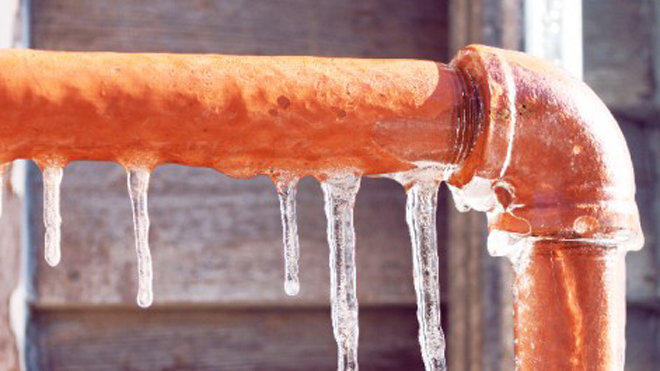How to Protect Your Plumbing from Freezing: Essential Tips
Call TodayWere you trying to locate selective information on Winter Plumbing Precautions: Preventing Frozen Pipes?

Cold weather can damage your plumbing, specifically by freezing pipes. Right here's just how to prevent it from occurring and what to do if it does.
Intro
As temperatures decrease, the threat of icy pipes boosts, possibly resulting in expensive repair services and water damage. Recognizing how to prevent icy pipelines is critical for property owners in cool environments.
Avoidance Tips
Insulating vulnerable pipes
Cover pipelines in insulation sleeves or make use of warmth tape to shield them from freezing temperature levels. Concentrate on pipes in unheated or exterior locations of the home.
Home heating strategies
Maintain interior spaces sufficiently heated up, especially locations with plumbing. Open cupboard doors to enable cozy air to distribute around pipes under sinks.
Just how to recognize frozen pipelines
Search for decreased water circulation from faucets, unusual smells or noises from pipelines, and visible frost on subjected pipelines.
Long-Term Solutions
Structural modifications
Consider rerouting pipelines far from exterior walls or unheated locations. Include extra insulation to attic rooms, cellars, and crawl spaces.
Upgrading insulation
Invest in top notch insulation for pipes, attics, and walls. Correct insulation helps maintain constant temperature levels and reduces the risk of frozen pipes.
Securing Exterior Pipes
Yard tubes and outdoor taps
Separate and drain pipes yard tubes before wintertime. Set up frost-proof faucets or cover outdoor taps with protected caps.
Comprehending Frozen Pipes
What creates pipelines to freeze?
Pipes ice up when subjected to temperatures below 32 ° F (0 ° C) for expanded periods. As water inside the pipes ices up, it broadens, putting pressure on the pipeline walls and possibly triggering them to burst.
Threats and damages
Icy pipes can cause water system disruptions, residential or commercial property damages, and expensive repairs. Burst pipelines can flooding homes and trigger considerable structural damages.
Indicators of Frozen Pipes
Determining icy pipelines early can prevent them from bursting.
What to Do If Your Pipes Freeze
Immediate actions to take
If you presume icy pipelines, maintain taps open to ease pressure as the ice thaws. Utilize a hairdryer or towels soaked in hot water to thaw pipes slowly.
Final thought
Preventing frozen pipelines calls for aggressive procedures and fast actions. By comprehending the causes, signs, and safety nets, home owners can secure their plumbing during winter.
5 Ways to Prevent Frozen Pipes
Drain Outdoor Faucets and Disconnect Hoses
First, close the shut-off valve that controls the flow of water in the pipe to your outdoor faucet. Then, head outside to disconnect and drain your hose and open the outdoor faucet to allow the water to completely drain out of the line. Turn off the faucet when done. Finally, head back to the shut-off valve and drain the remaining water inside the pipe into a bucket or container. Additionally, if you have a home irrigation system, you should consider hiring an expert to clear the system of water each year.
Insulate Pipes
One of the best and most cost-effective methods for preventing frozen water pipes is to wrap your pipes with insulation. This is especially important for areas in your home that aren’t exposed to heat, such as an attic. We suggest using foam sleeves, which can typically be found at your local hardware store.
Keep Heat Running at 65
Your pipes are located inside your walls, and the temperature there is much colder than the rest of the house. To prevent your pipes from freezing, The Insurance Information Institute suggests that you keep your home heated to at least 65 degrees, even when traveling. You may want to invest in smart devices that can keep an eye on the temperature in your home while you’re away.
Leave Water Dripping
Moving water — even a small trickle — can prevent ice from forming inside your pipes. When freezing temps are imminent, start a drip of water from all faucets that serve exposed pipes. Leaving a few faucets running will also help relieve pressure inside the pipes and help prevent a rupture if the water inside freezes.
Open Cupboard Doors
Warm your kitchen and bathroom pipes by opening cupboards and vanities. You should also leave your interior doors ajar to help warm air circulate evenly throughout your home.

I am just very eager about How To Avoid Freezing Pipes and I hope you appreciated the blog entry. Sharing is good. Helping others is fun. We appreciate your readership.
Book-Now